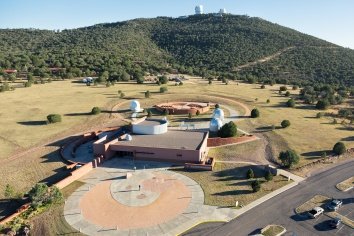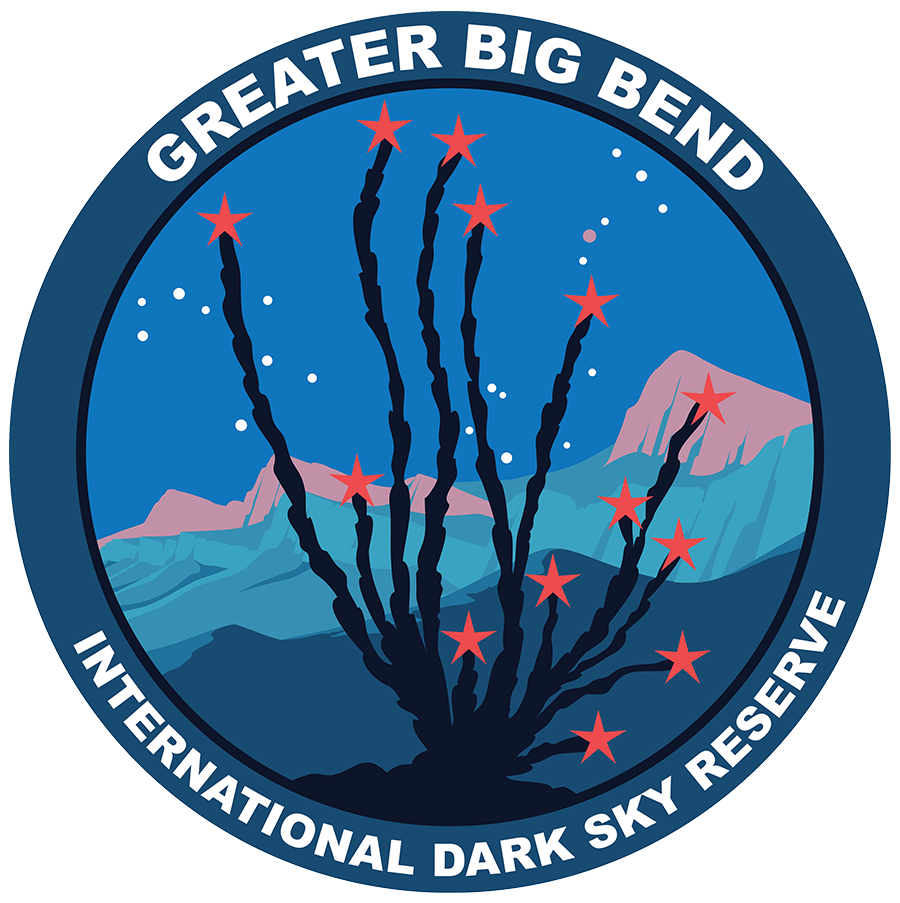
Calendar of Events
Planning a trip? This calendar lists dark skies related activities happening in the Greater Big Bend region. Many events may require reservations or tickets and may sell out in advance. See the listing for details.
Trip FAQ
When is the best time to see the Milky Way?
If you want to see the Milky Way at its best, plan for mid summer to early fall (July-September) and avoid a week leading up to a full moon. At this time of year the brightest portion of the Milky Way, sometimes called the “Summer Milky Way”, is high up at the start of the evening. Summer, however, typically does not have the best weather in the Big Bend region. Thankfully, the Milky Way can be appreciated at any time of year so long as the moon is not too bright and the sky is clear. The brightest portion of the Milky Way can also be seen from March through June, but you may need to stay up very late or wake up early in the morning to appreciate it. During the winter (December-March), the “Winter Milky Way” around Orion can be seen easily. While not as bright as the Summer Milky Way, it is still just as beautiful. Note that most photos of the night sky use long exposures, which exaggerate the colors and brightness of the milky way. The Milky Way will appear like a lightly glowing haze or clouds across the sky.
What time of year has the best weather in the Big Bend region?
The weather can vary greatly depending on both season and location in the Big Bend region.
April through June are typically the clearest but hottest months; lower elevations around Terlingua and Lajitas can still be over 100°F / 37°C even at night. Relief from the scorching heat can be found at higher elevations, particularly in the Chisos Mountains and Davis Mountains. Fire danger can be high in this time of year and burn bans are routine, but it is a good time for stargazing with clear nights over 80% of the time on average.
July through August are monsoon season, when the region receives the majority of its annual rainfall. Clouds and thunderstorms are much more common around this time. The daytime temperatures can still be exceptionally high, but rain showers and clouds bring temporary relief. On average only 45% of nights are clear at this time of year, but clear nights will be treated with dramatic displays of distant lightning and great views of the Milky Way.
September through November are typically pleasant, with mostly clear skies and comfortable temperatures. Occasional strong cold fronts can bring colder temperatures, fog, and clouds. These events can typically be seen with a few days warning in forecasts. On average 68% of nights are clear.
December through March can bring occasional snow to higher elevations, but more common are high winds. Crisp winter skies can be wonderous to behold. Clear nights outnumber cloudy nights at 63% clear on average, but conditions can change quickly and are more difficult to forecast in advance. Higher elevations can be bitterly cold at night, especially with wind chill factored in. Dress in layers. This is a popular time to explore the lower elevations that would otherwise be too hot later in the year. The spring break period of March is the busiest time of year for visitation.
When is the best meteor shower?
Generally, the Perseids in August and the Geminids in December reliably produce the most meteors. However, a full moon around the peak of a meteor shower can cut down on the number of visible meteors dramatically. For almost all meteor showers, the best time to observe them is in the early morning before dawn. However, meteors can occur anywhere at any time- even when there isn’t a shower forecasted! Meteors can also be seen several days before and after the peak of a shower, so don’t worry too much if you miss the peak by a day or two.
Should I plan my trip on a new moon?
Planning a trip around a new moon means you will not have to worry about the moon interfering with your stargazing. However, you don’t need to visit on that exact date to get a good experience. The week leading up to a new moon is usually just as good unless you plan to observe later than midnight or in the early morning hours, since the moon will not rise until the early morning. By contrast, the week leading up to a full moon is generally the worst time for stargazing as the moon will be both bright and up at the start of the night, necessitating staying up very late to get the true dark sky experience. However, even when the moon is up, planets, star clusters, and other objects will still be visible. Plus, the moon itself is always interesting to see through a telescope!

Full Moon
The moon will be full on this date, meaning stargazing will be impaired. If you are planning a trip to appreciate the night sky, it is best to avoid the time around full moon.

Davis Mountains Preserve Open Weekend
The Nature Conservancy’s Davis Mountains Preserve will be open for camping, hiking, biking, equestrian use, picnics, photography, birding and other outdoor activities. No reservations are required. The preserve, including the summit of Mount Livermore, is closed to the public except except for open weekends, with the exception of the Madera Canyon Trail which remains open year-round.

Texas Star Party
The Texas Star Party is a large annual gathering of amateur and professional astronomers at Prude Ranch, near Fort Davis, Texas. Registration required for entry.

Seeing in the Dark: Watching Invisible Bird Migrations
Come celebrate World Migratory Bird Day at the Alpine Public Library!

Full Moon
The moon will be full on this date, meaning stargazing will be impaired. If you are planning a trip to appreciate the night sky, it is best to avoid the time around full moon.

Airstrip Astronomy
Join us for an exciting night of stargazing, astrophotography and astronomy-based oral history at the Sauceda Airstrip!

Dark Sky Week at McDonald Observatory
Join us for a free activities and booths and see a talk on indigenous astronomy in the Big Bend, or sign up for a Star Party!

Alpine Earth Day Celebration
Come celebrate Earth Day in Alpine at the lot on Murphy Street, by the Farmer’s Market. There will be Educational Booths, Kids Activities, Mural Painting, Bouncy Castle, Plant Sale, Popcorn, and Snow Cones.

Dark Skies Artist's Reception
Celebrating the dark skies of the Big Bend region, Gallery on the Square in Alpine will be hosting artwork celebrating our night skies from April 20th to June 6th, 2023. A public reception will be hosted on April 21st, 5:30pm-8pm.

Dark Sky Week at McDonald Observatory
Join us for a free activities and booths and see a talk on indigenous astronomy in the Big Bend, or sign up for a Star Party!

Dark Sky Week at McDonald Observatory
Join us for a free activities and booths, sign up for special behind-the-scene tour of our largest telescope, see a presentation on light justice, or join us for a star party!

Dark Sky Week at McDonald Observatory
Join us for a free activities and booths, sign up for a tour of the observatory, or join a free presentation on preserving the Big Bend region’s night skies.

Dark Sky Week at McDonald Observatory
Join us for a behind-the-scenes tour of our largest telescope, activities, a talk on nature and darkness, and star party!
International Dark Skies Week
International Dark Skies Week in an annual worldwide celebration of the night sky. This week one of the best times of the year to appreciate the night sky in the Big Bend, as the weather is often clear. The Milky Way is visible in the early morning hours.

Full Moon
The moon will be full on this date, meaning stargazing will be impaired. If you are planning a trip to appreciate the night sky, it is best to avoid the time around full moon.

Davis Mountains Preserve Open Weekend
The Nature Conservancy’s Davis Mountains Preserve will be open for camping other outdoor activities.
Spring Break
This is the week of spring break for most Texas schools. Expect more crowds than usual and make reservations well in advance.

Full Moon
The moon will be full on this date, meaning stargazing will be impaired. If you are planning a trip to appreciate the night sky, it is best to avoid the time around full moon.

